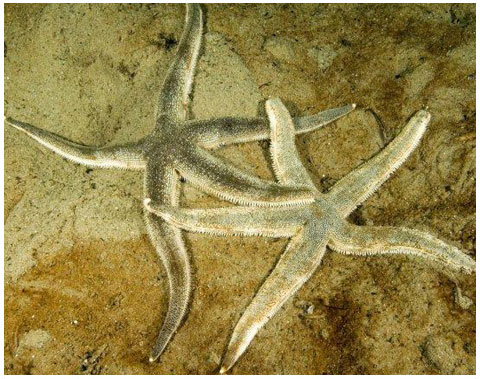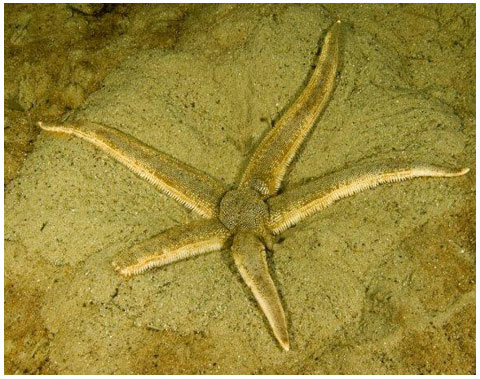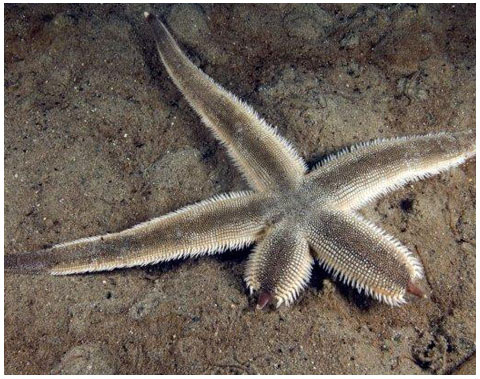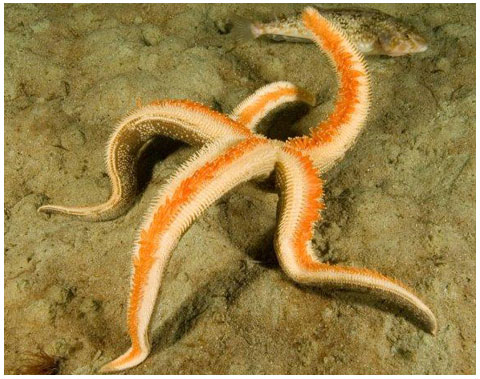
Class Asteroidea
Order Paxillosida
Family Luidiidae
SAND STAR
Luidia foliolata (Grube, 1866)
Identification:
5 long, tapering, strap-like arms with relatively small disc. Surface smooth, granular. Grey-green or brown, often with white speckling. To 60 cm (24 in) across.
Range:
Central Alaska to Nicaragua and the Galapagos Islands; 4 to 613 m (12 to 2,024 ft).





A pair of SAND STARS on their typical sand/mud habitat.
A close-up view of the underside of a single arm. Note the long, bluntly-pointed tube-feet.
The SAND STAR often digs a shallow pit when after prey such as worms and small bivalves.
Note the tiny regenerating arm tips on this SAND STAR. These arms may have been bitten off by a bottom fish or crab.
The SAND STAR is very fast, and extremely agile too. When turned on its back it will quickly somersault right-side up, usually in 30 seconds or less.
5 - 5
Previous
NEXT
Notes:
The SAND STAR'S cryptic, drab colour is perfectly suited to its life on soft substrates. You'll need to look carefully just to spot one. If you turn over a SAND STAR you'll see that the large tube-feet are bluntly pointed rather than having suckers, an adaptation to life on mud and sand. But it can move quite well over rocky bottoms unless the slope is steep; then it loses traction.
The SAND STAR eats clams, sea cucumbers, brittle stars and worms. When feeding it excavates a shallow pit to dig toward its prey. Brittle stars scatter in a hurry in front of an advancing SAND STAR. Prey are usually small since the SAND STAR doesn't evert its cardiac stomach like other stars. Most specimens have conspicuous regenerating arm tips. It's possible that these arms have been bitten off by bottom fishes and crabs, but observations are lacking.
When attacked by the MORNING SUN STAR Solaster dawsoni or the SUNFLOWER STAR Pycnopodia helianthoides, the SAND STAR can really get up and go. In fact it can "run" faster than any other PNW sea star and is surely one of the fastest in the world. In field speed trials we found that the SAND STAR can sprint at up to 2.8 m/min (9.2 ft/min). That may not seem all that fast, but for a sea star, it's really moving! It is also very agile; turn one upside down and it will right itself in 30 seconds or less.
INTRODUCTION | ABOUT SEA STARS | BIOLOGY | SPECIES | PREDATORS / PREY | SEA STAR WASTING DISEASE | ACKNOWLEDGEMENTS | FIELD GUIDE | VIDEO
Copyright © 2018 All rights reserved.